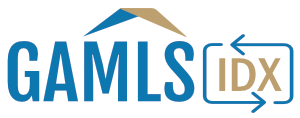How Do Mortgages Really Work? (And Who Actually Owns Your Loan?)
When most people think about getting a home loan, they imagine walking into a bank, signing some papers, and then sending payments back to that same bank every month.
That’s how it worked decades ago — your local bank lent you money directly from its own funds. But today, things work a little differently. In fact, the bank or lender you work with often isn’t the one who ultimately owns your loan.
So, who does? Let’s break it down.
Step 1: Getting Your Loan
You start by applying for a mortgage with a lender — maybe a bank, credit union, or mortgage company. They handle the application, processing, and approval. Once you close, you get the keys, and the monthly mortgage payments begin.
You might keep making payments to the same company that gave you the loan, but often your loan is “transferred” to a new servicer. Don’t worry — this doesn’t mean your loan terms have changed. It just means another company is handling the payments and escrow.
Step 2: The Servicer vs. The Investor
Here’s the important distinction:
- The Servicer is the company you make payments to each month. They manage your account, escrow, and customer service.
- The Investor is the company or institution that actually owns your loan.
Most of the time, the servicer does not own your loan. They’re simply collecting payments on behalf of the investor (and earning a small fee for it).
Step 3: Where Your Loan Really Goes
Behind the scenes, your mortgage is usually packaged together with thousands of other loans and sold to one of three major institutions:
- Fannie Mae (Federal National Mortgage Association)
- Freddie Mac (Federal Home Loan Mortgage Corporation)
- Ginnie Mae (Government National Mortgage Association)
These organizations buy mortgage loans from lenders, pool them together, and create what’s called mortgage-backed securities (MBS).
Step 4: Mortgage-Backed Securities Explained (Simply)
Think of mortgage-backed securities as bundles of loans sold to investors. Wall Street firms, pension funds, insurance companies, and even your 401(k) or mutual fund may own a piece of them.
If you’ve ever heard of “Ginnie Mae bonds,” that’s exactly what they are — securities backed by mortgages, especially FHA and VA loans.
This process helps keep the system moving. By selling these securities, Fannie Mae, Freddie Mac, and Ginnie Mae free up cash so lenders can make new loans to more homebuyers.
What About Jumbo Loans?
Not every mortgage qualifies for Fannie Mae or Freddie Mac. If your loan is larger than the conforming loan limit (in 2025, that’s $766,550 in most areas, and higher in some high-cost markets), it’s considered a jumbo loan.
Jumbo loans are sold to different investors, but the idea is the same: they’re often bundled, sold, and turned into mortgage-backed securities, just outside of the government-sponsored system.
The Big Picture
So here’s the cycle in plain English:
- You get a mortgage from a lender.
- That loan is bundled with many others.
- It’s sold to Fannie Mae, Freddie Mac, Ginnie Mae, or another investor.
- The loan is turned into mortgage-backed securities and sold to Wall Street investors.
- Those sales generate more money for lenders to make more home loans.
And that’s how the mortgage world keeps turning.
Why This Matters to You
As a homeowner, the process behind the scenes doesn’t change your payments, but it’s helpful to understand:
- Your loan may change servicers (who you pay), but your loan terms stay the same.
- The secondary market keeps mortgage rates lower and makes financing available to more buyers.
- Knowing how it works can give you confidence when you buy your next home.
Bottom line: When you make your mortgage payment, most of it flows through the servicer to the investor, and eventually to the institutions or individuals who invested in mortgage-backed securities. That system is what makes homeownership possible for millions of people every year.





